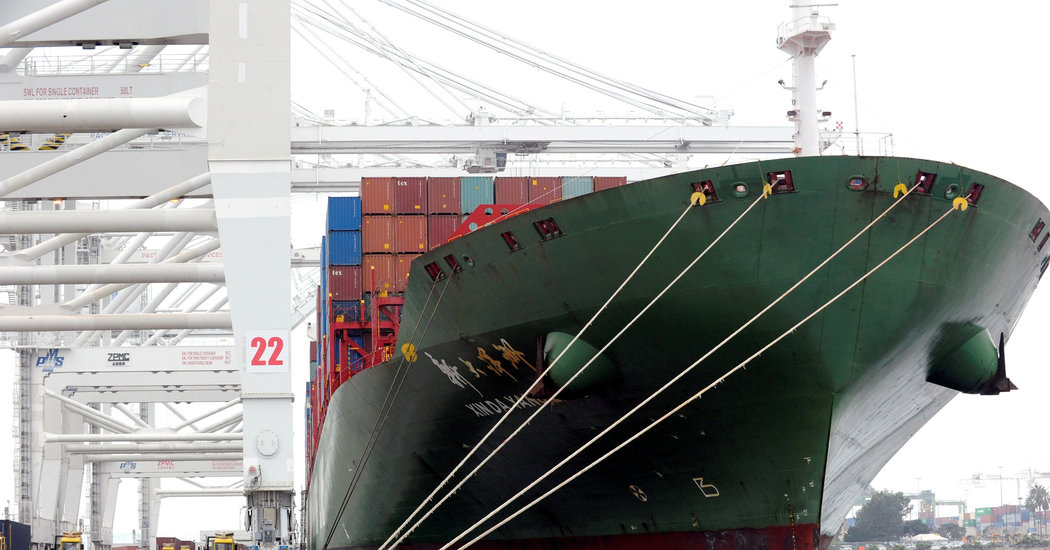There was never much doubt that President Trump would make boasts about the economy central to his re-election campaign; that is his style, after all. What is becoming more clear is that the data on the economy are giving him something genuinely worth boasting about.
That was especially evident in the first employment numbers of 2020, released Friday morning. It was about as good a jobs report as an incumbent president could hope for nine months before Election Day — and not just in obvious ways.
The big headline out of the latest numbers was that employers added 225,000 jobs in January, comfortably more than analysts had expected. That alone suggests that economic growth is steady at a minimum, and maybe accelerating as the year begins.
The seemingly bad news in the report — the unemployment rate ticking up to 3.6 percent from 3.5 percent — was actually driven by positive underlying trends. The share of adults either working or looking for work rose to 63.4 percent, its highest level since mid-2013. And the share of adults between ages 25 and 54 who were employed reached 80.6 percent, its highest level since mid-2001.
For years, an open question was whether the many Americans who dropped out of the labor force in the aftermath of the Great Recession would ever come back in. The answer is a resounding yes.
Then there are wages, which have been the weak spot of the employment picture for years. They still are: Average hourly earnings are up only 3.1 percent over the past 12 months, below the rates being recorded for most of last year (the same measure rose 3.5 percent for the year ended in August).
But as much as workers might want to see a few extra tenths of a percent growth in their paycheck, the good news for the Trump administration is that this downshift in wage growth is an important reason the Federal Reserve looks unlikely to raise interest rates this year, and may even cut them.
In effect, if wage growth were sending signs of inflation pressure building in the economy, the Fed would be more inclined to try to prevent it, and in the process could cause a significant slowdown or even a recession. Weak and falling wage growth amounts to the Fed’s permission slip to try to keep the good times going.
Moreover, overall inflation has been low enough that even the soft 3.1 percent growth in average hourly earnings means pay is rising faster than prices for consumer goods — so it’s not as if workers are ending up worse off, on average.
Although most sectors of the economy are revving, creating jobs at a healthy pace, there is a notable exception. Manufacturers cut 12,000 jobs in January, the second straight month of decline.
This partly reflects the effects of the trade war, and may reflect ripple effects from Boeing’s shutdown of production of its troubled 737 Max plane. There’s no telling how the politics of the manufacturing slump may play out in key battleground states.
The good news for the Trump administration is that this opens the door for a rebound in the sector between now and Election Day. Already, the calming of trade tensions with China with a “Phase One” deal in January has settled financial markets. And a key survey of manufacturers suggests that the sector swung from contraction to expansion in January.
Presidents’ economic records are highly dependent on where the nation is in the economic cycle. They have less control of the economy than a lot of people think.
Tax and regulatory policies matter, certainly, as do appointments to the Fed. But exactly how much decisions in the Oval Office shape the course of a $20 trillion economy is more open to debate. What is more clear is that good economic conditions tend to favor incumbents — a persistent finding in political science, although recent research suggests there’s a smaller effect because of greater polarization.
There are no guarantees in life, and for all we know the economy could hit some slump over the coming months. Coronavirus could spread in a way that damages economies globally, trade wars could re-escalate, or some unforeseen catastrophe could emerge.
But the economy has excellent momentum, jobs are plentiful, and the Fed is unlikely to do anything that will change that in the months ahead.
There are plenty of structural problems in the United States economy, including inequality and a lack of mobility and opportunity for many people. But in cyclical terms, the economy is the strongest it has been in an election year (or really any year) since 2000.
And President Trump will surely not be shy about telling people that.

